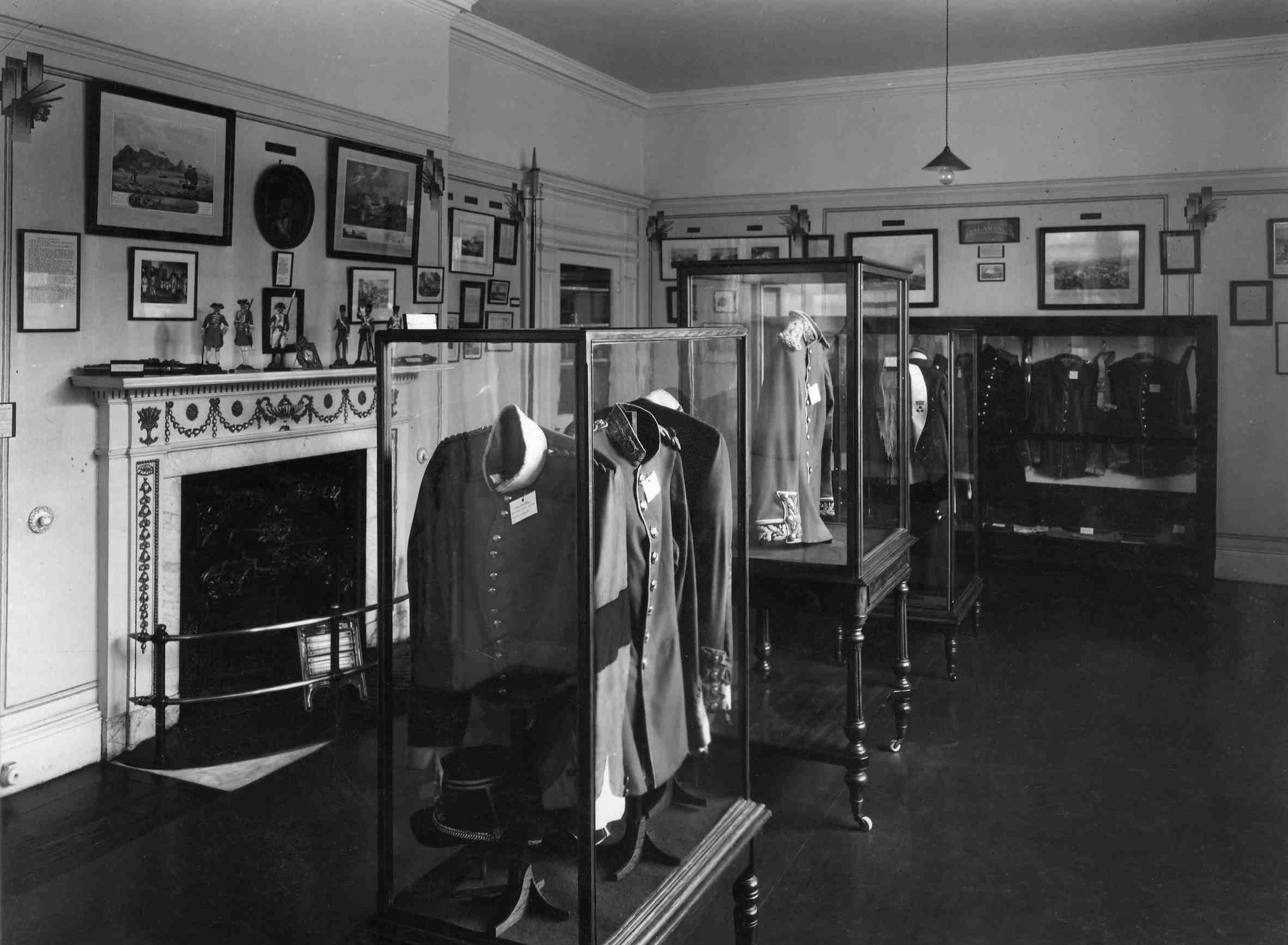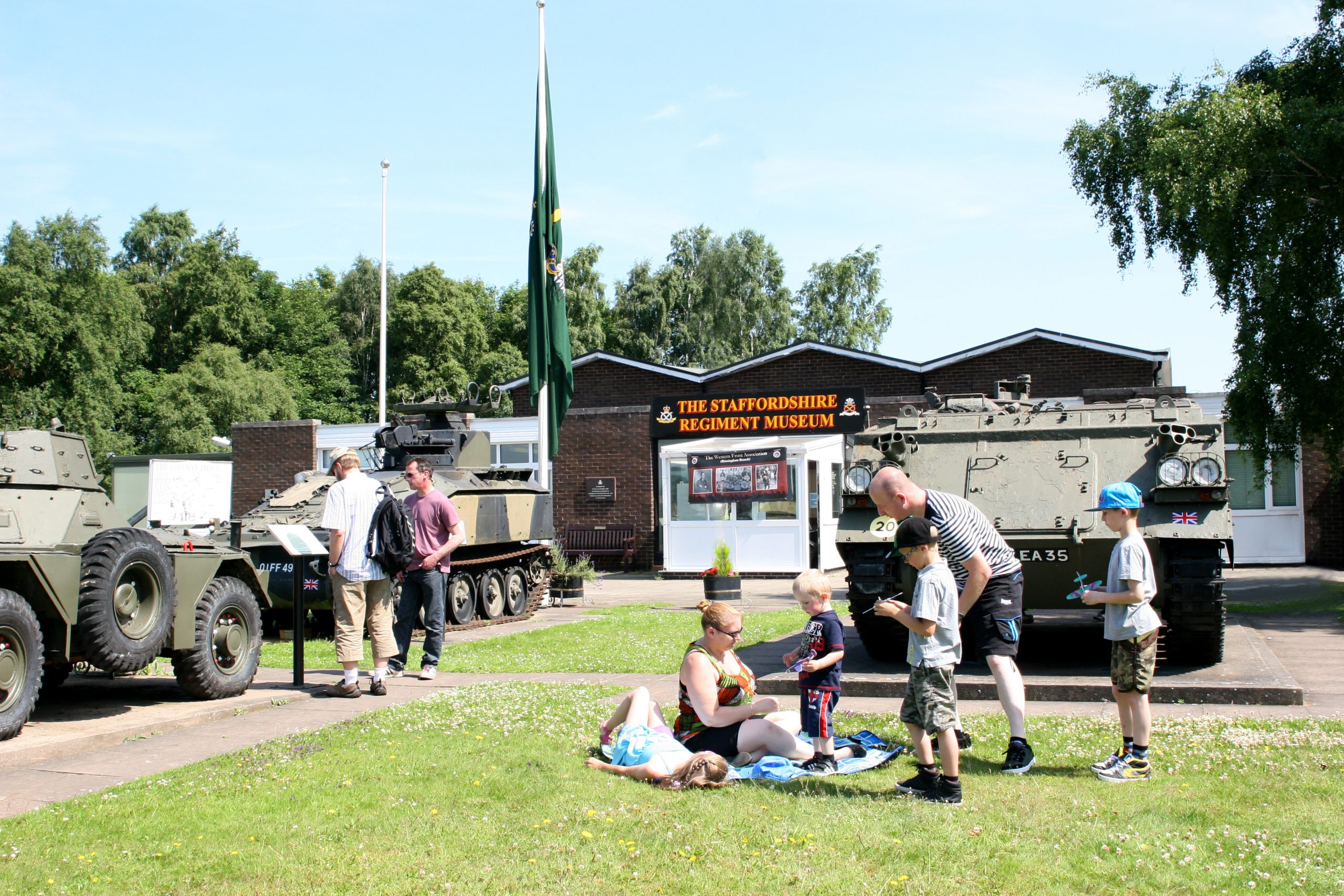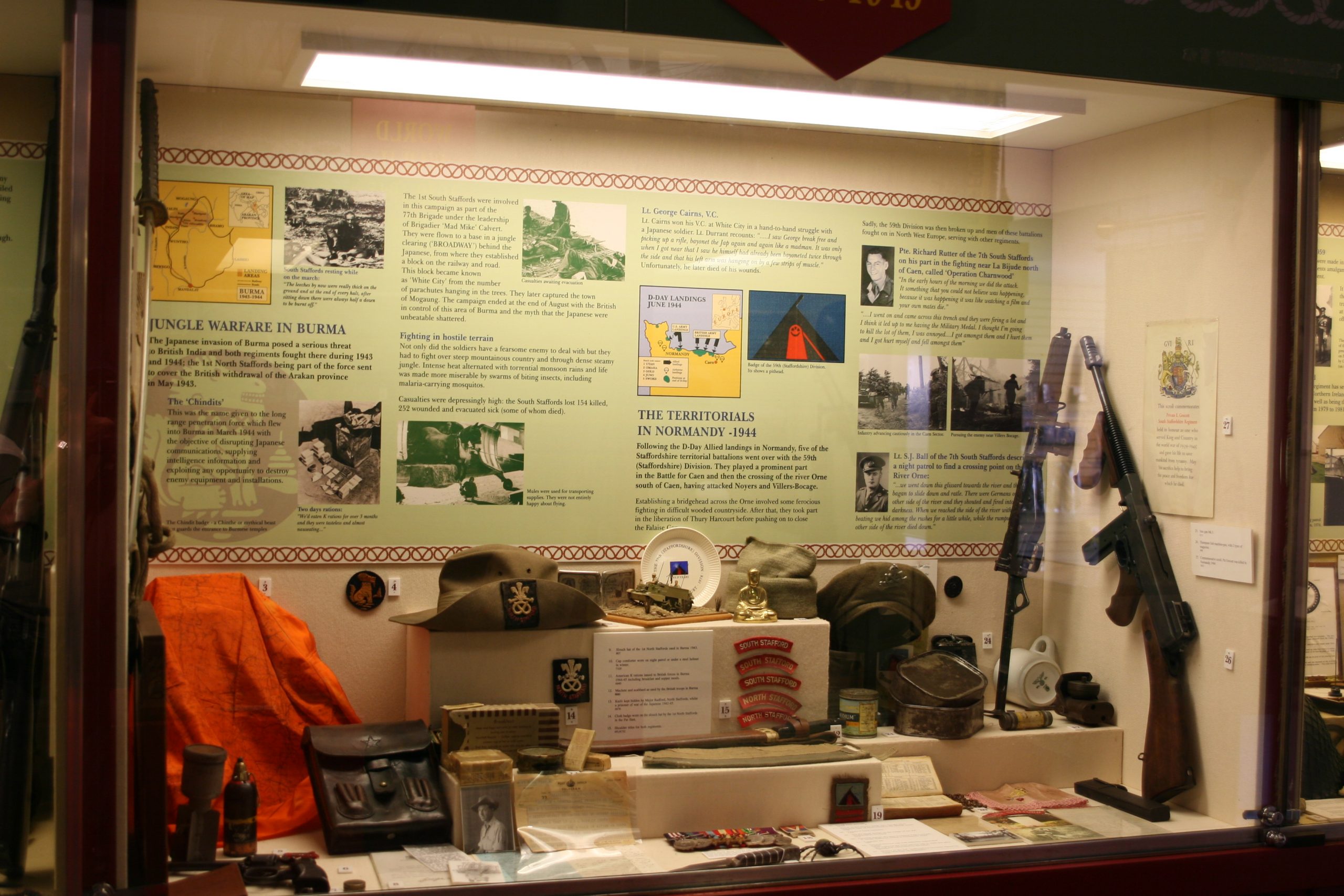The present Museum building was purpose-built as the Regimental Headquarters and Museum of the Staffordshire Regiment. It lies adjacent to the former Whittington Barracks, which was opened as the Depot of the South Staffordshire and North Staffordshire Regiments in 1880.
In 1959, the South Staffordshire and North Staffordshire Regiments had amalgamated to form the Staffordshire Regiment. Prior to that date, both Regiments had had their own museums. The South occupied a handsome Georgian house in St. John’s St., Lichfield, known as Davidson House. The Museum of the North Staffords had begun life in the old Library building in Beacon Street and at some point had moved to a building in the Barracks. In 1963 the two Museum collections were brought together in their new home.
In 2007 Regimental Headquarters of the Staffordshire Regiment closed, leaving the Museum as the sole occupant. A new headquarters building for the newly formed Mercian Regiment was established 500 metres away. The Museum, which now incorporates items from the Mercian Regiment, sits alongside the new home of military medicine and the Headquarters of the Defence Medical Services (DMS) Whittington. DMS Whittington was formally opened on the site of the old Whittington Barracks by the Duchess of Cornwall in May 2014.
The present Museum building dates from 1968/9 and was funded by the MOD who, at that time, had a commitment to creating purpose-built RHQ and museum buildings for all the newly amalgamated regiments. Ours was probably the only one ever built.
The Museum has been extended over the intervening years. A library/muniment room, known as the “Butler Room” after one of the Regiment’s great benefactors, Colonel Eric Butler, was added later, as was a toilet block.
In 2000, the Museum’s now famous World War 1 replica trench- the Coltman Trench- was constructed outside in the grounds. This proved to be the starting point for our very successful education programme where we focus on the experiences of the World War 1 and World War 2 soldier. The trench complex provides a focal point for a wide range of events and activities, many involving uniformed re-enactors and full-scale battles. The education programme alone attracts around 5,000 schoolchildren each year and the Museum has doubled its visitor numbers since its refurbishment in 2014. Since then additional outdoor exhibits have been introduced to increase the Museum’s offer.



